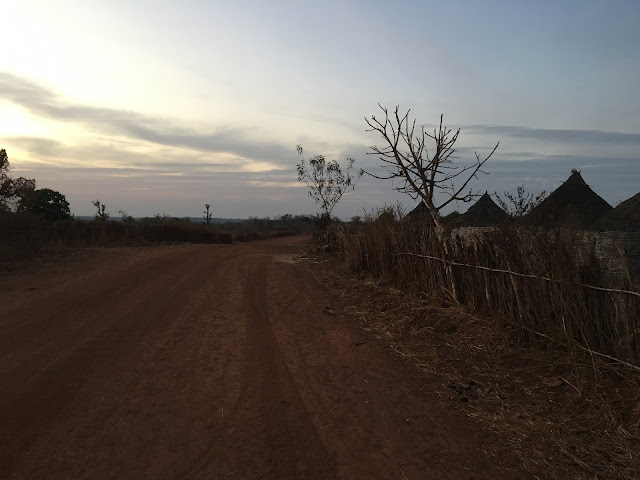I Can See Guinea from my Friends' House!
The day before I needed to head into Kedougou to transit to Thies for our 2-week technical In-Service Training, I had the opportunity to spend one night at another volunteer site in the region. As usual on a Tuesday morning, I biked one hour to my luumo (weekly market) town. The only things different about this ride were the (1) I was by myself on the trail for the first time, and (2) I had a backpack and my tennis shoes strapped to the rack above my back wheel with the ubiquitous thin black rubber strapping found on the back of every bike in Senegal. My black tennis shoes with highlighter yellow accents matched my black-and-highlighter-yellow Eddie Bauer packable backpack so well it looked as if I had planned it. Despite the hilly ride and bumpy terrain, my load was still solidly attached the to back of my bike when I reached the luumo. Not bad for my first abstract strapping challenge. I greeted the teachers at their compound then went to find a bean sandwich for breakfast, o...
